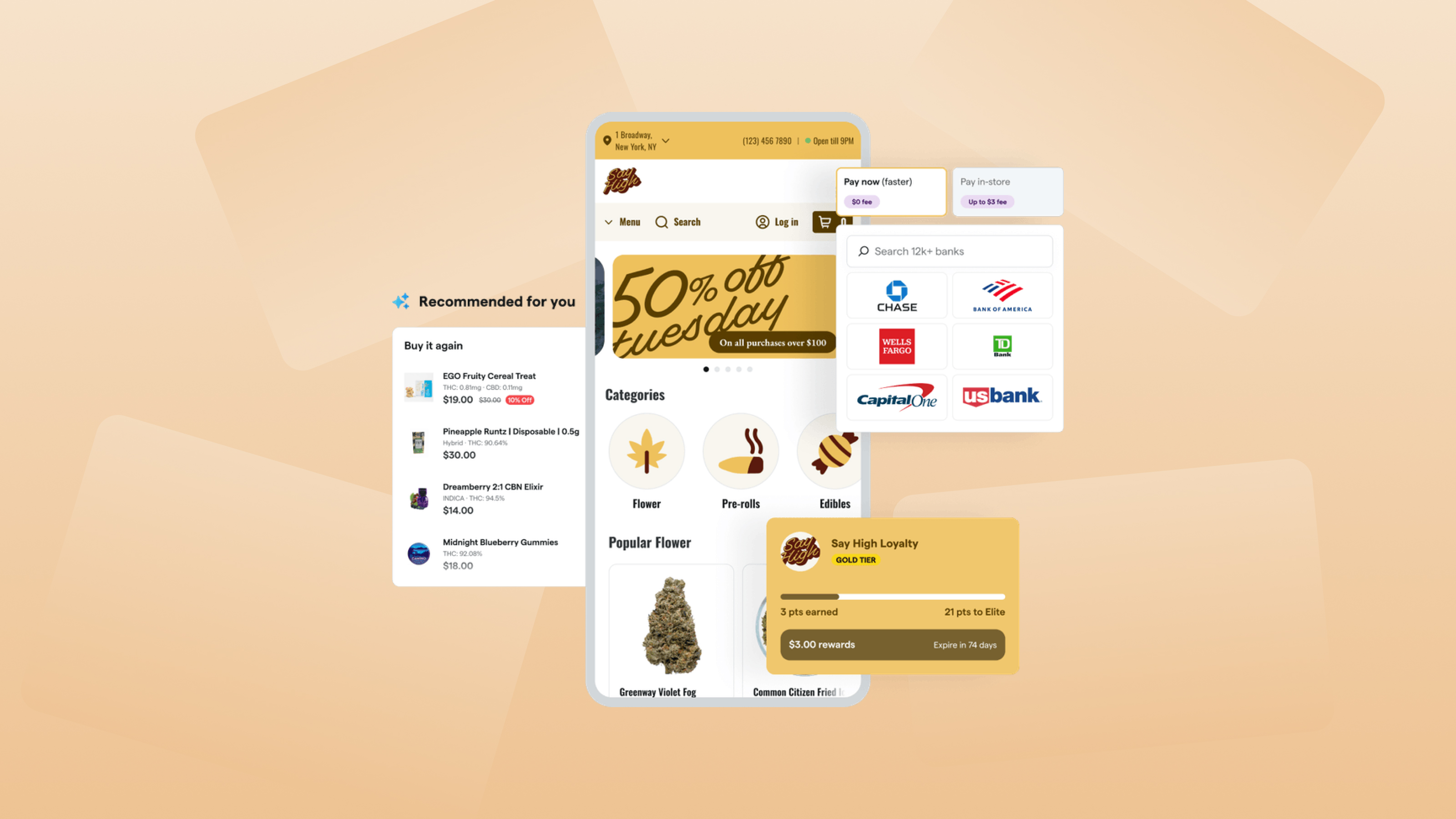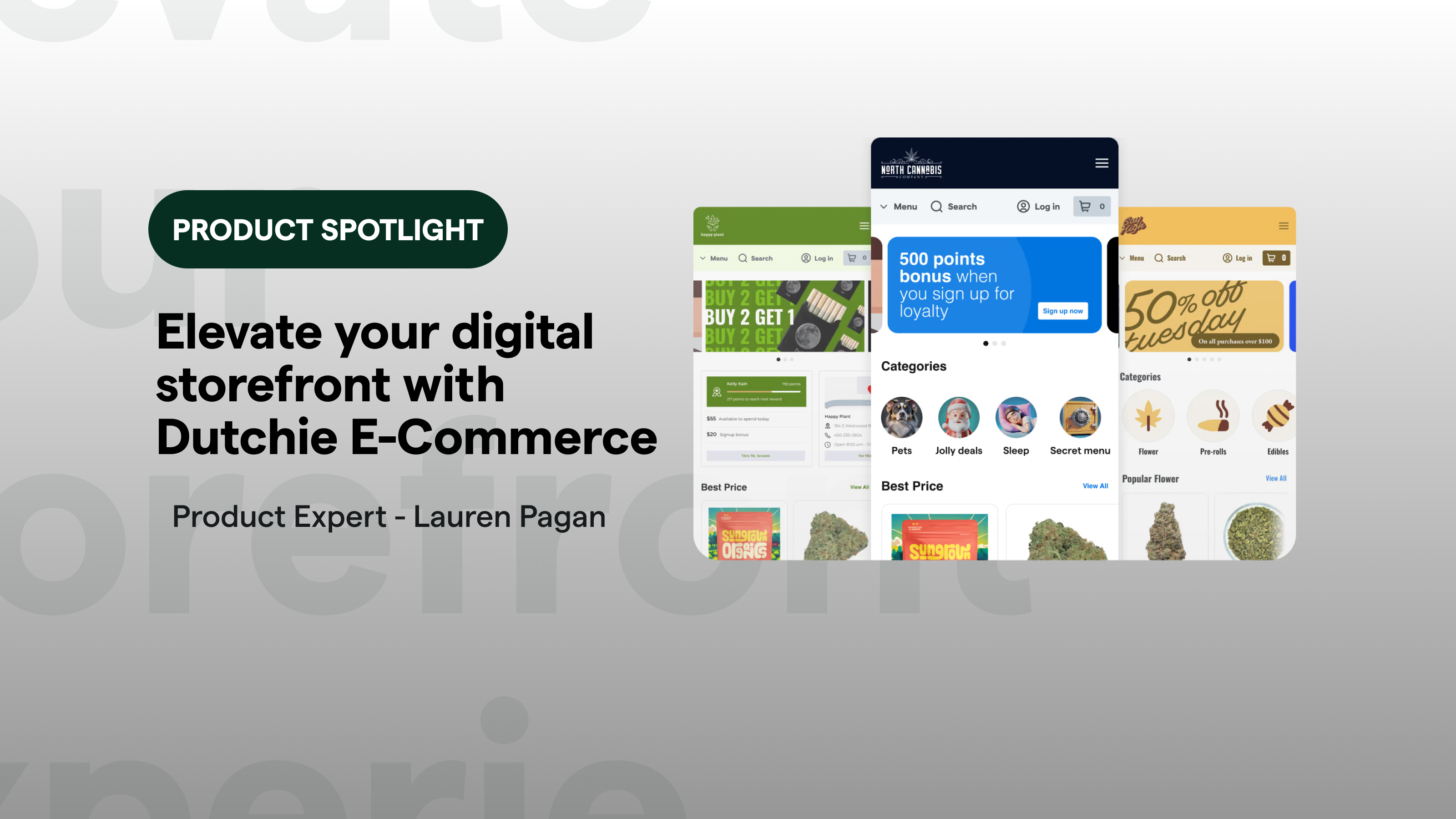
How to improve your cannabis brand’s online presence
As a wholesale cannabis brand, marketing can be difficult. You often have to rely on the marketing the dispensary does on behalf of your brand, and even then complications and restrictions can arise.
Most mature cannabis brands have to flesh out their menus for wholesale with robust testing and product data. The more information they provide, the more likely it is that dispensaries will purchase from them. If you follow a similar formula on your website, you can increase your brand’s customer appeal.
Product descriptions and branding on your website
Product descriptions play an important role in the purchase process. In many cases, they are the only content that a customer reads in order to differentiate one product from another online. Most ecommerce sites research the brand’s website, so you should ensure that your brand is presenting its products accurately.
With proper tracking, retailers can see exactly how different approaches to writing product descriptions impact customer shopping behaviors. In one ecommerce study by the Nielsen Norman Group for instance, 20% of incomplete purchases appeared to relate to products with unclear descriptions.
Although some industries can sell products with nothing more than a title and photograph, the cannabis industry is not one of them. People are often confused about the wide range of terms, constantly shifting cultural attitudes, and the high entry barriers that the world of cannabis offers.
Brands that take this opportunity to offer information that both newcomers and longtime cannabis users find valuable have a clear advantage both online and in the store. Product descriptions are a prime opportunity to deliver valuable information to customers and influence their buying decisions.
How to describe different types of cannabis products
Cannabis users already know that they can expect to see an amazing variety of cannabis products on sale at most dispensaries. Anyone walking in the door and seeing a dozen types of tinctures, topicals, oils, and concentrates will often look to multiple sources to help make an informed decision before buying anything.
Most customers already have an idea of what type of product they are looking for—even if they don’t know exactly what it is called. Cannabis brand marketers that use informative titling and helpful product descriptions are able to guide their customers towards the types of products they wish to buy. It sets them up for success with ecommerce sites that may feature their products as well.
Each product type comes with its own best practices concerning the product description:
- Flower. Most cannabis consumers who smoke dry flower care equally about the composition of the product, its psychoactive effects, and its flavor profile. Good product descriptions should offer information about these elements of every strain, going beyond the basic indica/sativa/hybrid designation using feature/benefit writing. It is important to note the terpene levels in each cannabis strain so the user can glean a sense of the smell and corresponding effects that come from each selection.
- Pre-Rolls. For pre-rolls, make sure to clearly express if the joints are infused with kief or oil, highlight the quality of the flower used, and ensure an accurate weight description without the paper or crutch included.

- Concentrates. The world of concentrates can be intimidating for newcomers, so it is important to use common terms in a way that is easy to understand. At the same time, cannabis wholesale brands should use key details about concentrate purity, delivery method, and extraction so that dispensary owners know what they are buying.
- Vaporizers. Like regular concentrates, customers often want to know the extraction process involved in making these cartridges. Include if they are filled with distillate oil, CO2-extracted oil, live resin, and so on. It is also useful to create clear guidelines on which battery types are compatible with your particular cartridge.

- Topicals. Topical ointments and lotions are increasingly popular among cannabis enthusiasts and patients. Brands should make a clear distinction between therapeutic effects and psychoactive ones, in order to avoid unhappy customers purchasing topicals and expecting to experience a high.
- Edibles. When it comes to edibles, defining the appropriate dosage is extremely important. Many states require product descriptions to contain dosage information, and some go so far as to require manufacturers to sell edible products with specific dosage quantities. Customers also want to know how long the dose will take to kick in. Although this can vary based on body chemistry, try to advise a rough time period before the customer may try to up the dose.

- Tinctures. When it comes to advertising your tinctures, make sure to indicate the base used to make the oil. Tinctures are often made from grain alcohol or a coconut oil base. Also, be clear when listing the bottle size and how that corresponds to the product’s potency. Like edibles, you can also include a recommended dosage in the product description. This can help customers understand the breakdown of doses per bottle.
Cannabis brand owners that take advantage of product descriptions to provide clear and concise information about their products help their customers make informed choices. This can help build a reputable brand all on its own, but the real benefits begin when brands use descriptions as powerful marketing tools.
How to make a great product description
A great product description does more than relay useful information to customers—it also boosts sales. Cannabis brands with an intuitive grasp on cannabis culture and customer expectations learn how to leverage product descriptions towards sales success in the following areas:
- Define the buyer persona. Certain products target certain customers. The more a wholesale brand knows about its customers, the better it can target them with specific product descriptions. The ideal product description may change based on the customers’ location, age, gender, income level, and cultural interests.
- Talk about features and benefits. Features are things that products have. Benefits are things that customers want. Brands should consider how they communicate the benefit their product may offer a customer. Include general effects like “relaxing” or “energizing.” You can also pull data from your cannabis test results and work them into the product’s features/benefits section. Connecting features to benefits is a proven way to establish the value of a product. Functional tidbits, like the item’s ingredients, often go overlooked online. These features imply benefits for those looking to avoid allergies or verify health information.
- Reflect the brand’s voice. Every brand has a unique voice. Product descriptions that reflect that voice help customers identify that brand as a reputable source of value. Whether the brand’s tone is casual, academic, or street-savvy, its product descriptions have to match.
- Use bullet points. Bullet points are great for improving text readability. This works both online and in the brick-and-mortar retail environment. Every product’s most important details should be emphasized in bullet point format so that the product description is skimmable, yet informative.
Visual representation
Besides descriptions, photos are the key to gaining consumer interest in the product. The written content on your website should be just as alluring as a high-resolution photograph of the product, positioned upright and well-lit. The image often appears extra striking when taken in front of a white backdrop. Simple, clean, and high-quality photos will allow the product to thrive.

These tips can help your brand shine on digital shelves
It takes strategy to help your brand stand out in an ecommerce marketplace. You really have to present your products in a high-quality fashion. All of these tips, from presenting a unique voice and tone, to expanding beyond typical product descriptions, and more—can set your brand apart from the rest. We encourage you to bring the product to life and create exposure for your brand from your wholesale menus to your consumer-facing website. Since legal cannabis sales take place through a dispensary, it’s best to verify your brand is represented correctly at the source.
Why this is valuable for your brand:
- Save yourself and your retailers time by providing accurate information.
- Ensure consistent brand representation across all ecommerce menus.
- Provide customers with the most up-to-date product information.
- Include terpene and cannabinoid information on applicable products, as ecommerce sites like us may engage customers through interactive displays.
Need assistance?
Dutchie has a team of professionals who can help you update your product listings across hundreds of menus.
Here’s how it works:
- Send your assets to Dutchie’s content team: content@dutchie.com.
- Our team builds your products in Dutchie’s product library.
- Updates are sent automatically to all the menus where your products are shown.
Happy harvesting!










































